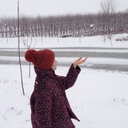Dietary flavonol and flavone intakes and their major food sources in Chinese adults.
Sleutelwoorden
Abstract
The study aimed to estimate dietary flavonol and flavone intakes and investigate major dietary sources by FFQ in Harbin of China. A total of 5,046 volunteers completed a semiquantitative food frequency questionnaire (FFQ). A random subsample of 167 healthy subjects completed the 7 consecutive 24-h dietary recalls and 2 FFQ for assessing the reproducibility and validity of FFQ. The correlation coefficients between 2 FFQ were 0.72 for flavonols and 0.65 for flavones; and between FFQ 2 and the 24-h dietary recall, they were 0.62 for flavonols and 0.58 for flavones. When flavonol and flavone intakes were categorized by quartile, complete and partial agreement ranged from 76% to 84%. The total intake of flavonols and flavones was 19.13 mg/day, and the mean flavonol and flavone intakes were 14.30 mg/day and 4.82 mg/day, respectively. Quercetin was the major contributor (31%) to total intake of flavonols and flavones, followed by kaempferol (22%). The main food sources of flavonols and flavones were apple (12%), potato (8%), celery (7%), eggplant (7%), and actinidia (5%). This work could facilitate the investigation on the proposed relation between these flavonoids and the prevention of chronic diseases.









